
05 May Patellofemoral Pain Syndrome Explained – Part II
This Post has been created and reviewed by Lionel Pannunzio (Physical Therapist and Board-Certified Sports Specialist at White Bay Physical Therapy)
Incidence, Overuse factor, Running and PFPS
Incidence
- Patellofemoral pain (PFP) is a frequent cause of anterior knee pain in Runners.
- The prevalence rate of Anterior knee Pain is between 8 % and 10 % in runners.
- More common in females than males.
- Without proper Treatment, PFP will become a refractory condition which may persist for many years.
Overuse: Too much load , too Fast as the cause of PFPS
Just a reminder that PFPS is associated with a rapid increase in the mileage , uphill workouts or any sharp increase in activity that irritates the anterior knee.
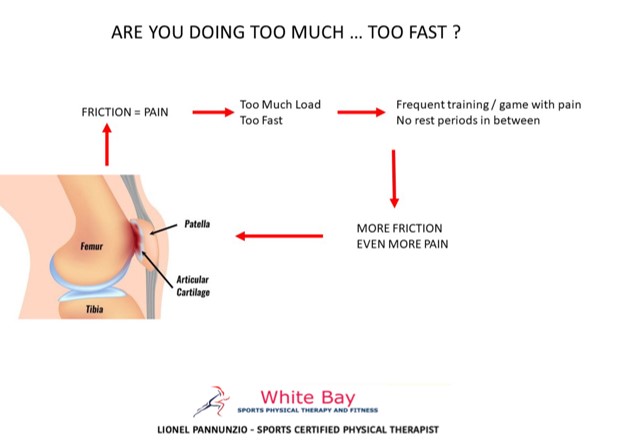
What other activities or movements will trigger PFPS?
Just picture this: walking will create forces in and around the patella of 0.5 times the runner’s body weight. A simple activity like Jogging increases the load to 6 times body weight and more complex activities like jumping will double the load on the Patellofemoral joint to 12 times the runners bodyweight.
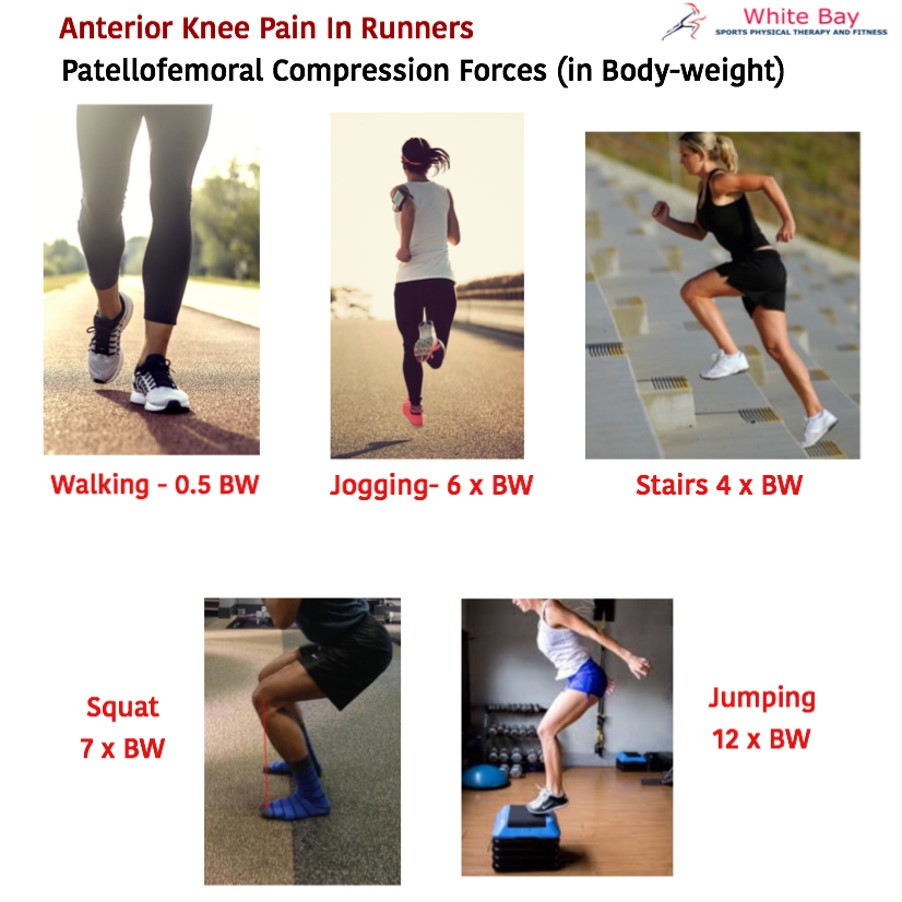
What is Wrong with my Knee ?
There are many potential factors. (see picture below)
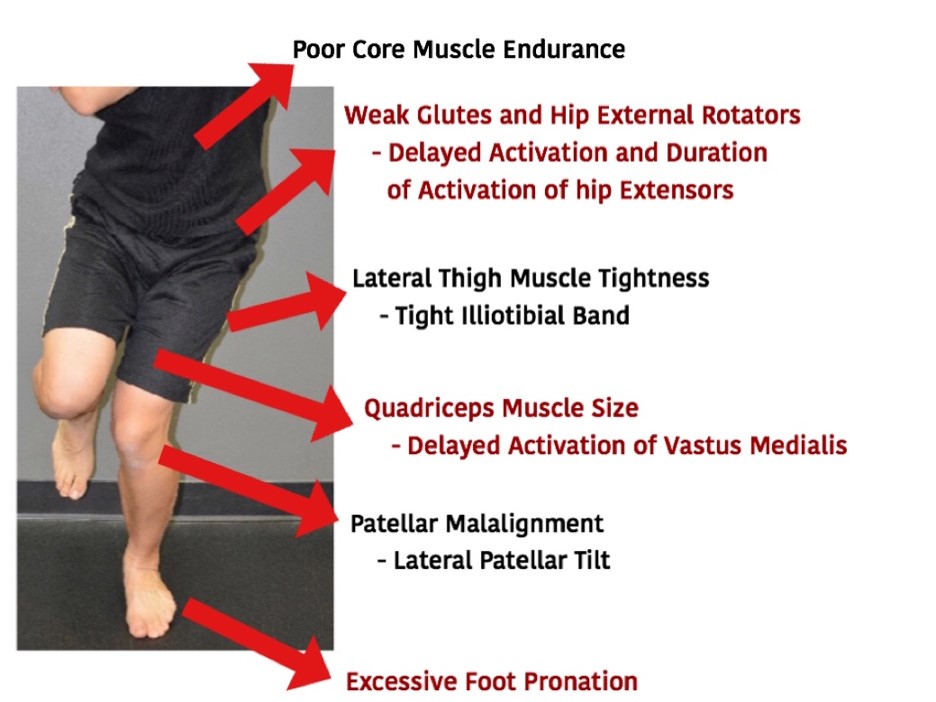
-
Core weakness can contribute to the development of Patellofemoral Pain Syndrome (PFPS).
Core muscles control the position of the pelvis and in conjunction with the hip muscles maintain proper alignment of this area. Weakness in core musculature could result in too much anterior or lateral ( or both) tilt of the pelvis forcing the lower extremity to deviate from normal positions. Sometimes we find poor core endurance which is an inability of the core to sustain a work load for long periods of time. The runner is ok for some time but then when core muscles fatigue, this person will start showing these abnormalities we just mentioned.
-
Internal rotation of the femur
Internal rotation of the femur can cause poor tracking of the patella in the trochlear groove of the femur. This could be due to weak core musculature, weak hip extensors or weak external rotators allowing the femur to deviate internally while under weight-bearing.
-
ITB tightness
This “abnormal” position of the femur will increase tension in the ITB creating pain. The ITB is also connected to the patella so tension in this muscle will track the patella laterally as well.
-
Quadriceps Strength
Research shows that Quadriceps size is highly related with patellofemoral pain. A decrease in the size of the Quadriceps is always found in players with long standing Anterior Knee Pain. Besides the quadriceps weakness as a whole, some researches like to link weakness in the vastus medialis ( one of the four muscle of the quadriceps) with Patellar pain . When the VMO muscle is too weak, the vastus lateralis will create a lateral (outwards) patellar tilt.
-
Foot position
Foot positioning is also a risk factor for developing PFPS, too much pronation of the foot will contribute to the misalignment of the tibia and femur creating uneven friction in the Patellofemoral Joint
Principles of treatment
When treating runners with PFPS all these factors must be taken into account in order to successfully return these athletes to sports participation: Too much training, too quick ? … Weak hip muscles ?… lack of flexibility in the thigh? … flat foot?….
That’s why a comprehensive assessment followed by a treatment tailored to the findings with emphasis on addressing and /or correcting the deficits this person may have is my opinion the best way to recover from this condition
A comprehensive rehabilitation must include
- proximal (trunk and hip) and
- local (knee) ,
- distal (foot) approaches as well as
- Education with emphasis on load management
-
Proximal Approach
Restore muscle strength of the Core and the Hip
Hip dominant exercises to increase strength of Hip extensor and Hip External rotators muscles.
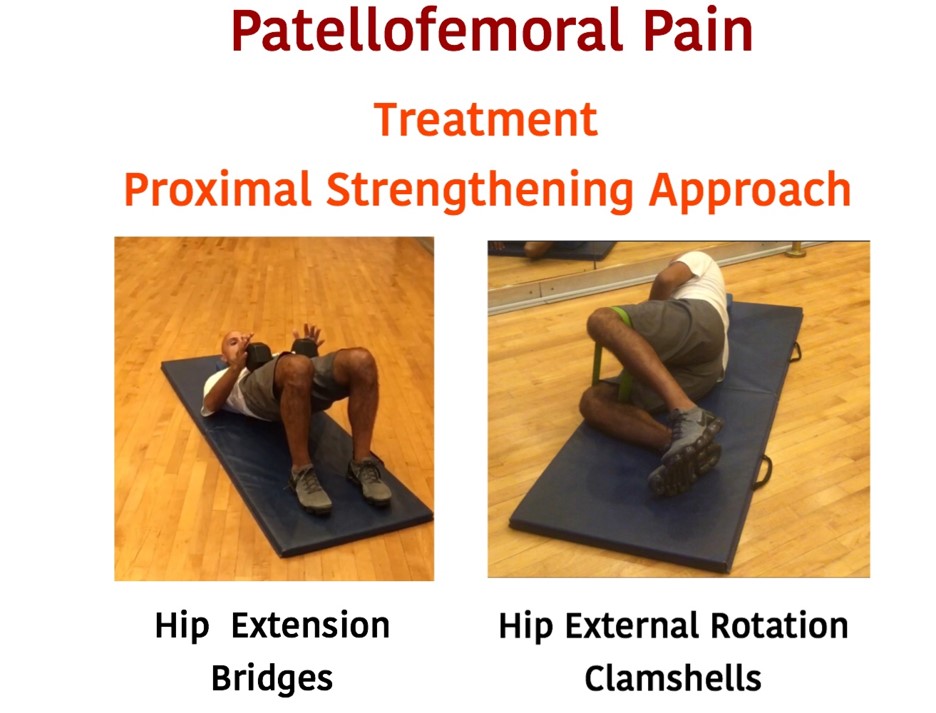
-
Local Approach
Release any tension in ITB and lateral side of the thigh and knee
Restore Muscle Strength and size of quadriceps with emphasis on Vastus Medialis Obliquus
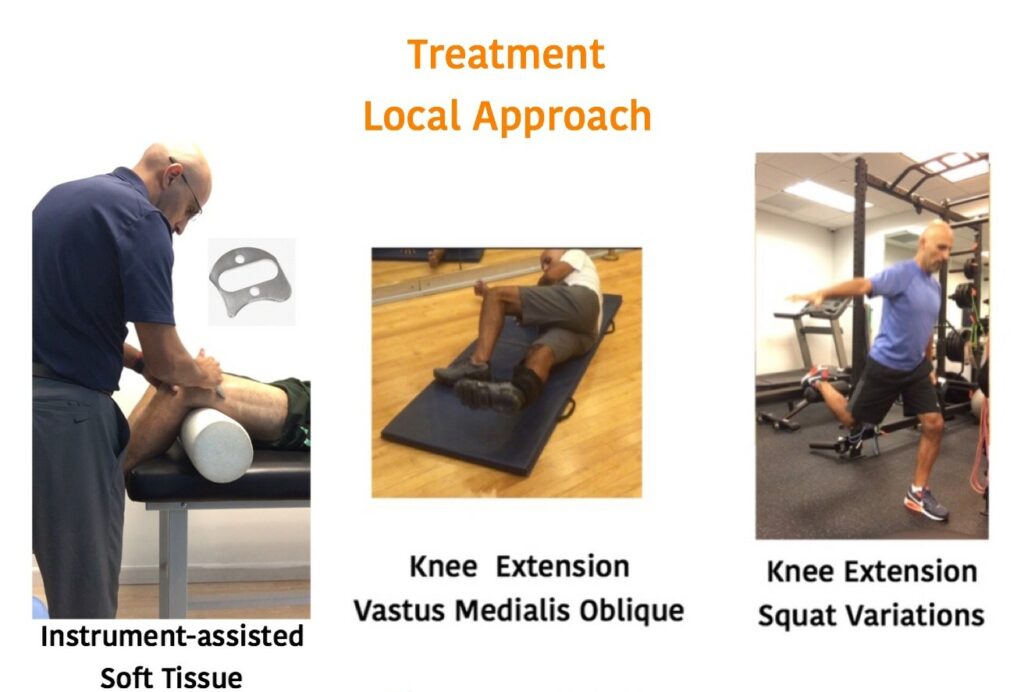
-
Distal Approach – Passive treatment
Foot orthotics and Knee Taping or Knee Braces may also help with the alignment part of the problem. Research supports all three for short term pain control.
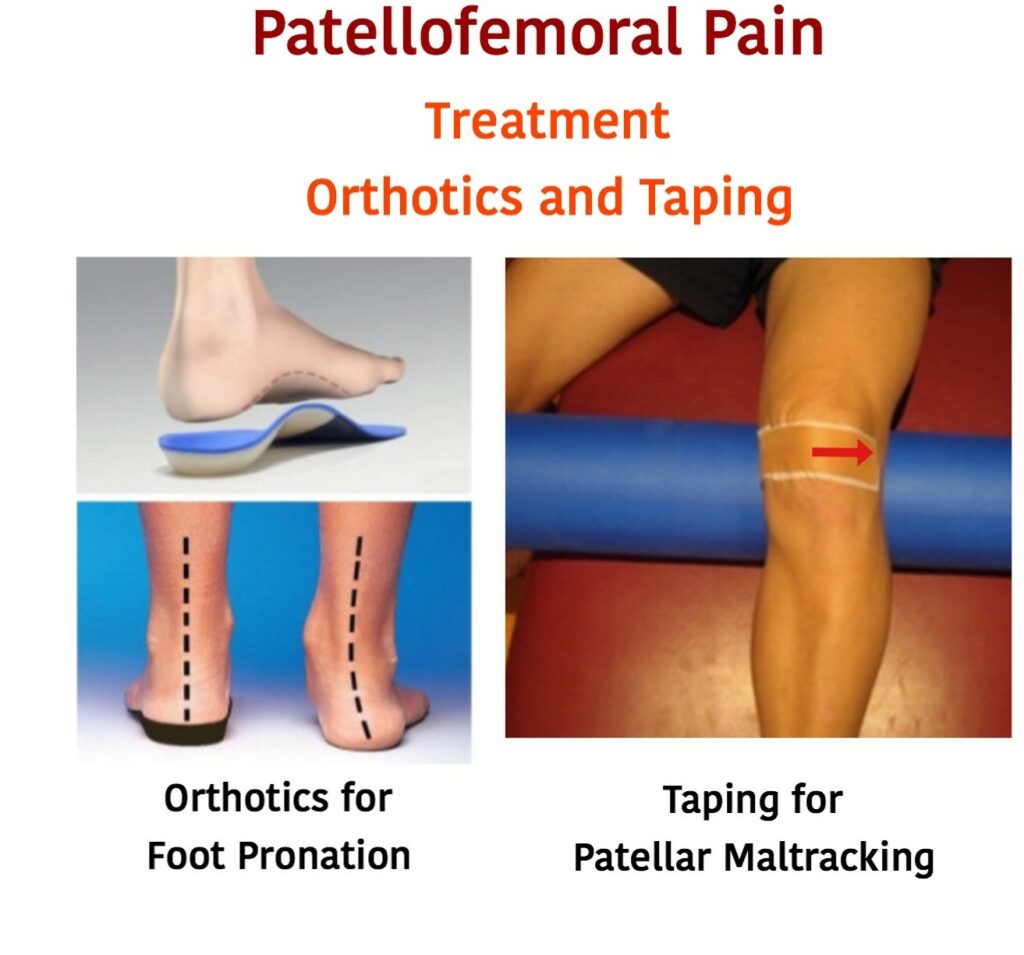
-
Restore Function
At a later stage we need to work on Power exercises for the runner to be able to Jump, Accelerate, Stop and change of Directions without pain. Due to the longstanding pain many of these activities had been associated with pain and therefore there is a lot of muscle inhibition associated to this condition especially in the quadriceps
-
Load Management
Educate the player in the importance of loading the joint progressively. For example, return to run in small amounts and with proper rest time in between practice runs. Increase load very slowly and paying a lot of attention to the Pain during the these practices and the pain afterwards to decide when to load the joint again.
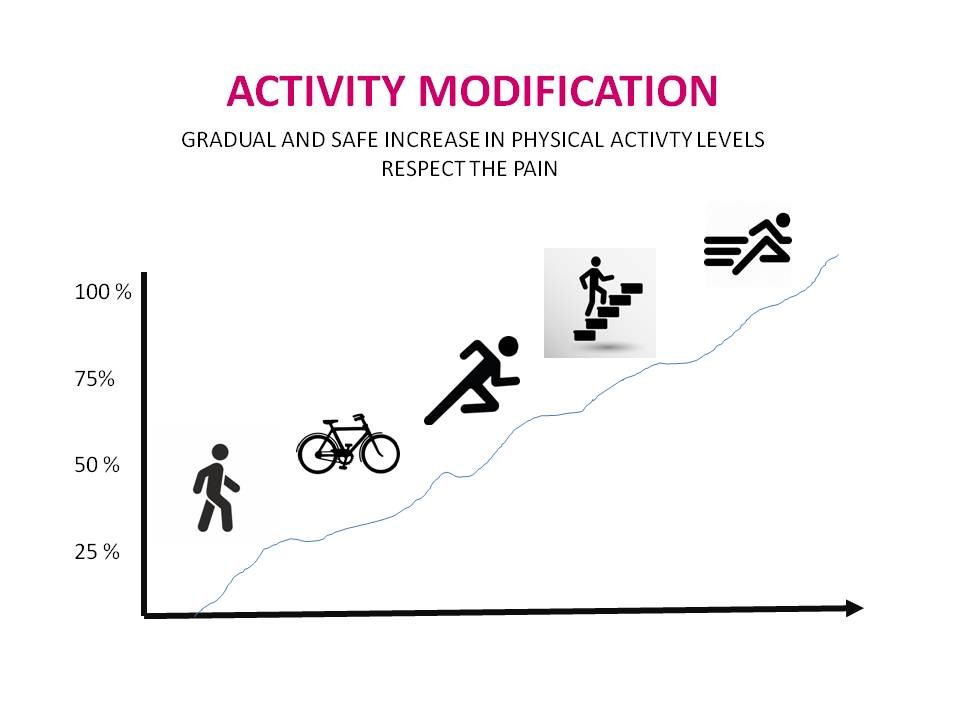
We will cover next ‘how to perform rehabilitation exercises for each stage and approach’ with plenty of helpful tips to recover from this awful condition.
Read Part III [Rehab]
Do you have any questions? Drop a note, we’d love to hear from you.
Sign Up and ask the Therapist.
Lionel Pannunzio is a Physical Therapist and Board-Certified Sports Specialist, owner of White Bay Physical Therapy.
He has been helping runners for more than 20 years
“Keeping Athletes in the game”
With offices located at 17180 Royal Palm Blvd – Weston – Florida – 33326
You can reach him at 754-244-2561
Visit his website: www.wbsphysicaltherapy.com
[email protected]

Sorry, the comment form is closed at this time.